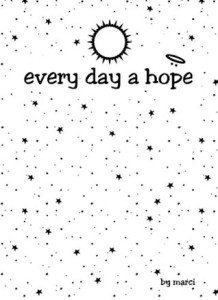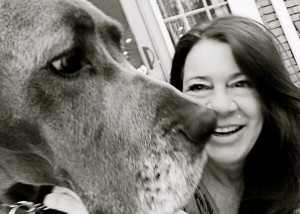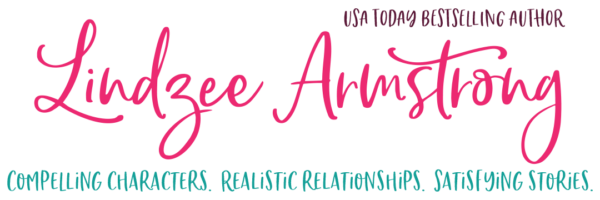 Scraps of Life. These very short stories and illustrations combine to inspire, promote inner healing and creativity, cause introspection and more. The pronouns can be interchanged and are not reflective of any single person but in all people who need inspiration, healing, or just to feel good as they think about life. When printed, there are pages for notes, drawings and more. There is always hope, even when we feel the most lost, and finding ourselves through these stories can help us explore our own healing, from whatever that may be, small or large.
Scraps of Life. These very short stories and illustrations combine to inspire, promote inner healing and creativity, cause introspection and more. The pronouns can be interchanged and are not reflective of any single person but in all people who need inspiration, healing, or just to feel good as they think about life. When printed, there are pages for notes, drawings and more. There is always hope, even when we feel the most lost, and finding ourselves through these stories can help us explore our own healing, from whatever that may be, small or large.
A survivor of sexual assault herself, the author has experience working with survivors of sexual assault, PTSD and more. A large portion of proceeds from any sales of this book will go to charity.
A conversation with Marci M. Matthews, author of Every Day a Hope
http://www.marcimmatthews.com/books.html
How would you describe Every Day a Hope? And how are you hoping people will use this unique journal?
I see Every Day a Hope as an empowerment tool and a source of reflection for readers. When I created the journal’s tiny stories and illustrations, I intentionally layered as many possibilities into each page. I wanted the book to look simple, but be meaningful on several levels. I want each reader to ruminate on a particular moment in a way that evokes personal reflection – a sort of mini epiphany from the reader’s own spirit, thoughts, history, mood and more. I want the reader to feel inspired, empowered, and expanded with a sense of her own thoughts and feelings. I want Every Day a Hope to be a safe place for people who need to heal and find hope. For me, Every Day a Hope started a conversation with myself. I hope this journal allows readers to better communicate and understand themselves as well.
Healing isn’t linear. And life, love, and our spirit-growth don’t follow linear paths, either. I want the pages of Every Day a Hope to suggest possibilities, and I hope each reader will make the journal her own in whatever way that means. Draw. Make lists. Think great thoughts. Take the pages of Every Day a Hope and color them, share feelings, make lists and draw out your dreams. You’ll notice, too, that I often switch up the pronouns I use in the journal. I do this to be inclusive, but I also switch pronoun usage if I feel society needs to think about a concept differently. My only wish is that this book brings something more to the reader: hope, healing, reflection, a lost memory, or just a new possibility created from a moment.
Some people like to keep their books as perfect as possible, not creasing the spine or bending a page. I must admit, I am the complete opposite. I devour, digest, display, and dismember books from enjoying them so much. I turn down corners, write in them, eat around them and make them part of my moment.
 You’ve written several books, including the very popular Every Star a Wish. Where do you get your inspiration?
You’ve written several books, including the very popular Every Star a Wish. Where do you get your inspiration?
Inspiration is everywhere; it is in every second. Inspiration can be found in a friend’s smile, an animal’s tail, a road sign, a light, a smell. I find inspiration in things people say and do and their connection to the world.
You know how we breathe constantly but rarely pay conscious attention to the act of breathing? For me, Inspiration works the same way: I will see a color or hear a word and it makes me feel a certain way or think a thought that becomes a concept for page in one of my books. A lot of times the end concept morphs into something completely contrary to whatever I initially saw or heard, which speaks to the layers of meaning all of us can find when journaling.
Q) Do you do your own artwork? Why is there an angel on every page?
I do create all of the art. Some pages literally started out as sketches on napkins or on the backs of bills I paid. I also have a tablet I can draw on directly, which I love. I chose to work only with black and white illustrations for Every Day a Hope because I want the reader to discover for herself the many shades of color available to her own path of healing.
The angel is representative of the spirit, and it is meant to be inclusive since I don’t want this book limited by one viewpoint. Sometimes the angel is a symbol of the reader, sometimes it is meant as an active character on the page – often both. The angel is an “everyman” symbol meant to enhance and and reflect the reader’s own spirit.
Q) Do you keep a journal? Do you ever look back at your own entries and learn something new about yourself? Or do you choose always to look forward, rarely looking at old journal entries?
At times I’ve kept what might be referred to as a journal. That sounds evasive, but I find the term journaling holds some intimidating connotations. What I do have are many places where I keep what I term “scraps of life.” I draw or jot down things pretty much everywhere. Sometimes I scribble with my mascara on a mirror or tape a fortune from a cookie into my wallet. I have some notebooks where there are short stories, taped things I picked up during my day like a magazine page or twig, or just written characterizations of people or animals. My phone is absolutely a journal these days, and I really love it for that. I love looking back at things, especially after a great deal of time has passed. Often my reward for cleaning a shelf is when I stumble on an old notebook and flip it open to find cool and creative work I did. At this point I usually wonder why I was so cool and creative when I was younger and what happened to me? Just kidding, I was never cool. But I did write some amazing things.
Q) You’ve worked as an award-winning crisis counselor for years. What place do you think journaling holds in the healing process?
Funny you should ask, because the conversations I’ve had regarding journaling led me with great purpose to make this book a reality. In my earlier books, I’ve presented stories because I believed they had significance and positivity, but with Every Day a Hope, I wanted to focus on healing, hope, and surviving specifically because of my hotline work.
One way to heal is to write everything down but keep only the positive. For instance, if you are using scraps of paper, throw the good things you’ve written in a box or a drawer, but get rid of all the negative notes. Say you are so angry right now or sad, write down anything at all that comes to mind. Write the way you feel, even hold the pen or crayon angrily or sadly if you want, but when you are done, rip it up and get rid of it. If what you wrote is in a notebook, tear out the page. Weeks or months later, if you look in the box or the drawer, especially on a bad day, you will find only positive reinforcement. This exercise can be very rewarding and empowering.
I believe the idea of a journal can be extremely beneficial for anyone, especially someone who has experienced trauma. The act of keeping lists or things one might put in a photo album or scrapbook all in one place can truly help the speed and quality of healing. “Journaling” can sound cool, but it can also sound intimidating, expensive, and like a lot of work to some people, including me. No one has to have an expensive journal or even a notebook, scraps of paper can serve a positive function. The important thing is to keep it positive and eliminate the negative.
Here are some things you could keep in a notebook: safety notes, safety planning, support contacts, resources, things you did on a good day, things that you like or used to like, songs or movies that make you happy, places you’d like to visit, photos of anything or anyone you like, random positive thoughts or quotes, observations. Don’t pressure yourself and don’t feel you must start on page one. Start anywhere you please. Write sideways or upside down. I used to experiment a lot with texture, size, and color. It can be really exhilarating to use a roll of paper and paintbrush or sidewalk chalk.
Q) What’s next for you? Is there another book in the works?
There is another book! It is titled Every Cloud a Dream, and it will explore themes of diversity and acceptance. Because of the book’s focus on dreaming, I will include more abstract and imaginary art. Attainable or not, we should have crazy, beautiful, and awesome dreams in our hearts and our heads: We should be dreamers! I think it is going to be a delightful challenge.
